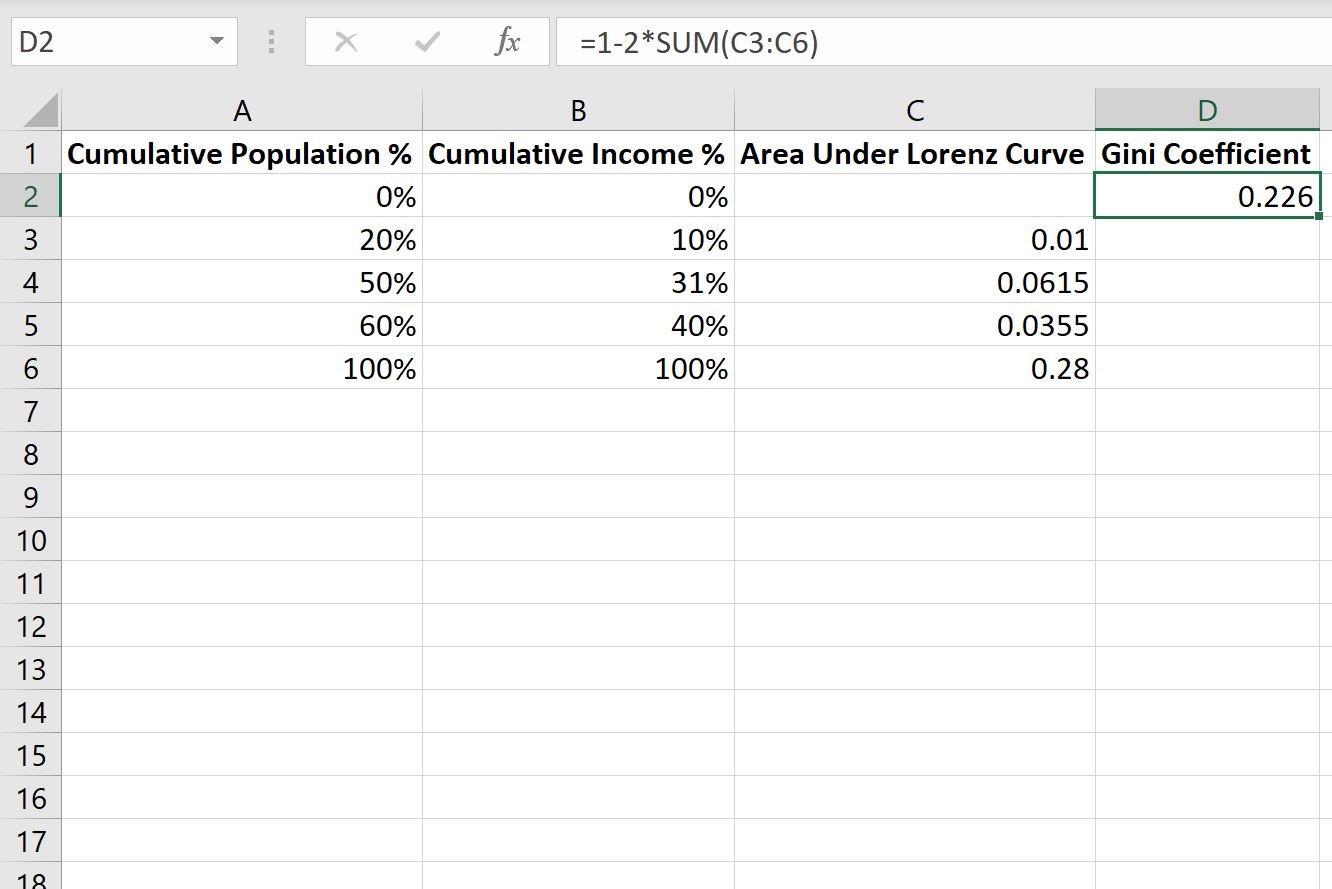Named after Italian statistician Corrado Gini, the Gini coefficient is a way to measure the income distribution of a population.
The value for the Gini coefficient ranges from 0 to 1 where higher values represent greater income inequality and where:
- 0 represents perfect income equality (everyone has the same income)
- 1 represents perfect income inequality (one individual has all the income)
You can find a list of Gini coefficients by country here.
The following step-by-step example shows how to calculate a Gini coefficient in Excel.
Step 1: Enter the Data
First, we must enter values for two columns: the cumulative population % and cumulative income % of individuals in a certain country:

Here’s how to interpret the values:
- The bottom 20% of individuals in this country account for 10% of the total income.
- The bottom 50% of individuals in this country account for 31% of the total income.
- The bottom 60% of individuals in this country account for 40% of the total income.
- 100% of individuals in this country account for 100% of the total income.
Step 2: Calculate Areas Under Lorenz Curve
Next, we need to calculate the individual areas under the Lorenz curve, which is a curve we use to visualize the distribution of income in a country.
In our example, we’ll type the following formula in cell C3:
=(A3-A2)*(B3+B2)*0.5
We’ll then copy and paste this formula down to every remaining cell in column C:

Step 3: Calculate Gini Coefficient
Lastly, we can type the following formula into cell D2 to calculate the Gini coefficient for this population:
=1-2*SUM(C3:C6)
The following screenshot shows how to use this formula in practice:

The Gini coefficient for this population turns out to be 0.226.
This is an extremely simple example of how to calculate a Gini coefficient but you can use these exact same formulas to calculate a Gini coefficient for a much larger dataset.